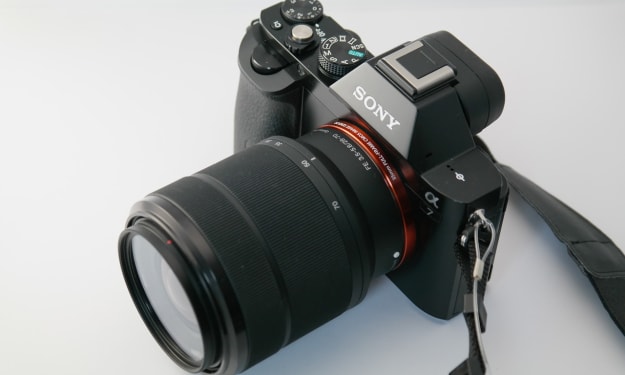Learning About Exposure: Part 1 - ISO
What Does ISO Do?

Learning about exposure: Part 1 - ISO
When someone asks me about exposure, I tell them how ISO, Shutter Angle, and Fstop affect the light that reaches the sensor. In essence, they all do the same thing. Move one, and it either makes the image brighter or makes it darker and then I detail each one.
Today we are going o Learn about ISO, what it does, how it does it, and other things to consider when adjusting it.
First, ISO is directly connected to Dynamic Range. Cinema Cameras have a native ISO, which became a thing when Digital cinema cameras gained popularity. If you increase your ISO, you increase your dynamic range in the highlights; if you lower it, you increase your dynamic range in the shadows. Every Cinema Camera (Alexa, Red, Blackmagic) has a native ISO, which means that the dynamic range in the highlights and shadows is optimal and balanced. A middle point, if you will. Each camera has several stops in the dynamic range and will vary from camera to camera.
What is Dynamic Range?
Dynamic range refers to how a camera can successfully capture the lightest and darkest areas of an image without losing detail. Once this range is exceeded, the highlights will wash out to white, and the darks will turn to black blobs.
Whenever you adjust your ISO, you move those stops of the dynamic range around, lower the ISO, and move 1-2 steps of the dynamic range to the shadows. Raise your ISO, and you move a few stops of dynamic range to the highlights losing them in the shadows.
Increasing your ISO will also add digital gain/grain to your image, mainly in the shadows/blacks. Lowering your ISO will clean up your shadows/blacks and limit your highlight dynamic range by a few stops, and highlights will blow out more quickly.
Most cameras have a native ISO of 800, like the Alexa and the Red cameras. Some Blackmagic cameras also have 800 as their native ISO, but the newer models like the Blackmagic Pocket Cinema Camera 4k-6k have a native ISO of 400. Each camera will have its own native ISO, and most of the time, it will be stated on their website.
What does it all mean?
Well, it means that you will achieve the best quality with the native ISO. If you see behind-the-scenes footage of tv shows or films shot with Alexa or Red cameras, they will all be 800 ISO which, as we stated, is their native ISO.
So basically, you are locked in at 400 or 800 ISO as your ISO whenever you shoot. Whenever I shoot product shots, interviews, or anything controlled, I shoot at the native ISO. Sometimes I change the ISO when it's more of a documentary or reality tv situation where not having the best quality doesn't matter.
This is where it starts to get exciting and when knowing how to light a scene begins to feel like something more than pointing a few lights at the subject and calling it a day. Why? Because if you are in a feature film or commercial setting, you have every aspect of exposure locked down, and your only variable is the lights you use and the intensity of such lights.
What are you talking about? cant I change the Fstop to what my light meter says?
Well, you can, but what if you want shallow depth of field or narrow depth of field? As a Director or Director of photography, your Fstop is an artistic choice; it's not random so that you can reach exposure. This is where a light meter comes in handy and is just a fantastic tool to have. (I recommend the Sekonic L-308 X-U. It's the one I own, use and love.)
Exposure turns into a game of modifying your light sources to match your native ISO, which in my case is 400; we are locked in at a shutter angle of 180 degrees (more on that in part 3) and at our 2.8f or 5.6f, which are common F-stops to shoot in.
In summary, shoot in your camera's native ISO, and your colorist will thank you.
About the Creator
Adrian A. Pedrin V.
B Movie Film Director | Writer | Geek | Avid video game player | lover of pizza and Science Fiction | Currently Filming a Docu Series about the food of Baja California.
Enjoyed the story? Support the Creator.
Subscribe for free to receive all their stories in your feed. You could also pledge your support or give them a one-off tip, letting them know you appreciate their work.






Comments
There are no comments for this story
Be the first to respond and start the conversation.